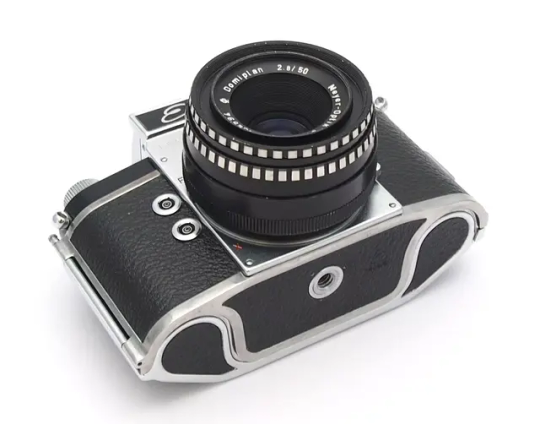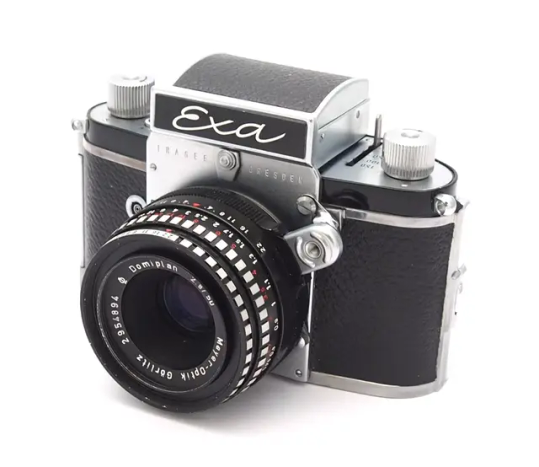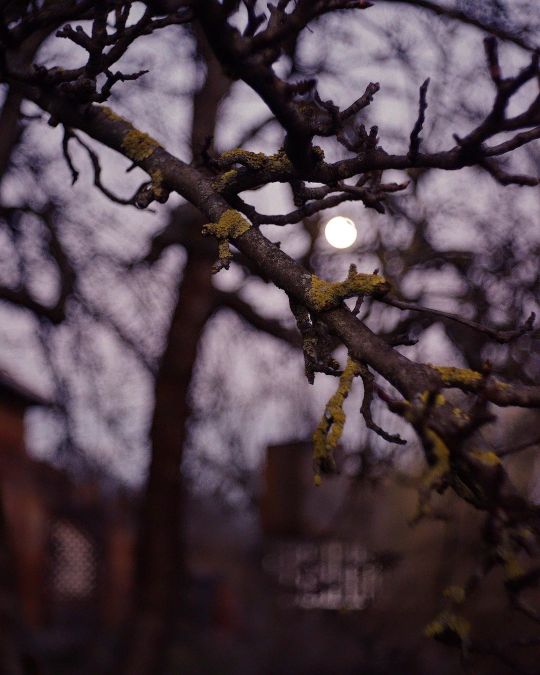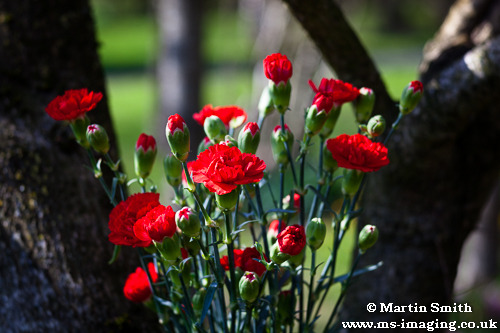#trioplan
Explore tagged Tumblr posts
Text

dreaming in the grass
Helios 44M lens
#helios 44m#helios lens#helios#photographers on tumblr#australia#western australia#original photographers#lensblr#nature photography#landscape#landscape photography#photography#nature#bokeh photography#bokeh#bokehlicious#black and white photography#black and white#black & white#monochrome#bnwphotography#imiging#Trioplan#grass#female photographers#female artists#artists on tumblr#dreamy#black-and-white
109 notes
·
View notes
Text

" Late Afternoon "...
2 notes
·
View notes
Text
001: Setting the Context
This is a space that I will use as a learning journal of sorts regarding my photography. The idea is to etch down any learnt lessons and keep a perpetual tab on any developing ideas or musings, rather than leaving it all to be ephemeral. Hopefully, after some time, any patterns in my thinking or methods --be it good or bad -- that would usually be missed, are here and made apparent to me.
Here is where I'm at, at this very moment.
I shoot stills in both film and digital.
With film, I shoot 35mm and 120, most of my work is made with 35mm SLRs consisting of Canon nFD and assorted but mostly Takumar M42 lenses. I started shooting film with a Canon T70, then an FTb and now an A-1 and T90, but with the FD lenses becoming expensive, I found out that I could adapt M42 lenses to my FD cameras, and started down that path. Nearly two years later I have a handful of Super-Multi-Coated Takumars with coverage from wide angle to short tele, and some of the more popular, relatively unexotic USSR and East German lenses, such the Helios, MIR, Industar, Trioplan 50mm and Pancolar. Having gotten sick of the often inaccurate exposure due to my FD cameras meters not being able to accurately meter stopped down at small apertures, I sourced a Praktica MTL5B to use my M42 lenses with natively, solving the inaccurate stop-down metering problem. I have since built up a wide to normal coverage of nFD lenses, and enjoy the two systems for the different looks they achieve -- the nFDs being more 'normal' and natural while retaining film-era glass characteristics, the S-M-C Taks having a slightly less natural but more characterful look, and the USSR and East German glass having more character and less fidelity still.
As for 120, I started with a Yashica Mat, and loved the look of medium format straight away. Wanting more versatility, I sought out a system medium format camera, and being priced out of the ideal Pentax 67, I bought a Pentacon Six and two lenses, the 80mm f/2.8 and 50mm f/4. Before long, the cons of the system outweighed the pros, and I sold it when I picked up a Pentax 67 with the 105mm f/2.4 and an SMC 67 55mm f/4 for a price I couldn't turn down. I love this system and hope to build it up with more lenses.
I have some 35mm point and shoots and other oddities like my Nikonos and Olympus XA, but these are only in use now and then.
Up until last year, I had only gotten Frontier JPEGs back from the lab, but now I get Nortitsu TIFFs to process them in Capture One and have more control over my output.
With digital, my first camera purchase was a Fuji XF10, which I used for about a year as well as an X10 and X20 before feeling very limited by their fixed lenses, and bought an X-E3. I very quickly bought a couple of its native lenses, the 27mm f/2.8 (mark 1) and XF35mm f/2. I used these lenses sometimes (and still do) but mostly I have used my vintage film glass via adapters. I was attracted to Fuji from the outset because of their famous 'film-like' JPEG profiles, which I used for some time before feeling I needed more control over the output. So, in April 2023, I bought a laptop and a Capture One subscription, with the goal to have my digital output look as film-like as possible. To this end, I spent some money on a Styles (Capture One lingo for presets) pack from Really Nice Images, but found them quite lacking.
Around this time, I was feeling quite restricted by the X-E3 in that I had a few vintage wides, but due to the crop factor of the Fuji, my widest lens --a 24mm -- became a 36mm, and with the native X mount lenses being out of my price range, that was the widest I could go. With this thought, and others about a more up to date sensor, video capability, and the potential lack of longevity of my Fuji, I decided to go full frame. I bought a Sony A7iv to use with my vintage glass at their full potential, and within the last few months, a Dehancer licence to further my film emulation goals.
What do I aim to achieve in my photography?
This is something I have written about recently for the Silver Halide 'Five Years of Silver' Community Exhibition, so I will just put that here.
I am based in the Swan Region and lean towards documentary-style photography while occasionally shooting editorial and gigs. I have aphantasia -- this means I have no visual memory or imagination, which heavily informs my photography, and often makes it challenging. Capturing and compiling fleeting and even mundane moments has become invaluable to me as time goes on. I love film because of the inherent look and (primarily regarding colour neg) its latitude, and the texture and often infidelity of vintage glass that promotes a gentle subjectivity to the people and places that I shoot. For the longest time, I thought of my photography as a means to tell the stories of others, but as I go on I am realising how much it has always been about me and my relationships with subjects, arguably even more than the subjects themselves -- people and places, the relationships complex and loaded or simple and plain -- but always subjective. Because of my aphantasia, I cannot internally manifest these relationships in a visual sense, so doing so in photographs makes them a tangible expression of my experience.
To go on from that, my aim in photography is to produce work that rings *true* to me and my sense of being, to visually represent how I feel about something, some place or someone, and capture the nature of that relationship. Because of this admittedly self-centred guiding principle of what my photography is about, I am conscious of the fact that it may not necessarily be very appealing to others. This is something that I have thought about a lot recently, and at the moment, am unfazed by.
Regarding film, I think I am most attracted to film (and film emulation) as the means to capture my photography for the reasons above and also as a sort of retaliation against the clinical and computational direction popular photography has been and will continue to head into for the foreseeable future, it seems. Even though there is the digital element of the interpretation of a negative and post processing in my film workflow, there seems to me to be more authenticity in using film as a base.
In saying that, I don't write off digital either, and I swing between preferring film and digital as a base quite a bit. My problem with a lot of work made with digital is that modern cameras and optics are so advanced now that photos are so technically perfect, which is incredible! But when the work is left perfect, you are left with a product that is exclusively about the subject, left in the most boring terms. What is the meaning of the work, other than look at this? To me, the lack of subjectivity kills the depth, unless the lack of subjectivity is an artistic choice in the first place. In my opinion, modern cameras and optics, used without intention, removes a lot of the artistry in photography.
I enjoy using digital as a base because it is way more versatile than film (until it isn't, regarding highlight retention) under most circumstances, and it is almost always with a vintage lens and run through film emulation software to get away from the clean, objective look you get out of camera.
What am I finding most challenging at the moment?
I'm finding it quite challenging to get a consistent and subtle enough look out of Dehancer. Sometimes it really hits, and other times it just doesn't seem to look good no matter what I do. This is something that will be talked about here for sure.
end
27/09/2024
1 note
·
View note
Text










Ihagee's Kine Exakta is widely considered the first popular 35mm SLR ever made. This camera, as well as its followups, all use the Exakta mount. This system, introduced in 1936, opened the door for 35mm SLR photography. SLRs allowed for far more photographic applications than rangefinders, including medical photography, microscopes, telephoto lenses, etc. Over 20 Exakta camera models were produced from 1936 to 1969. The Exakta mount was used with minor modification by Tokyo Kogaku in their Topcon cameras, so there is lens interchangeability between the two systems.
Lenses for Exakta systems were made by many manufacturers like Carl Zeiss, Meyer Optik, Schneider-Kreuznach, E. Ludwig, Enna, Kilfitt, Isco-Göttingen, Rodenstock, Schacht & Steinheil. One of the best-known lenses for the Exakta system is the Carl Zeiss 58mm F2 Biotar lens. The Biotar design was later used by many Russian and Japanese lens manufacturers. The Ihagee’s ‘serious’ cameras. It is very similar to the two Exas I already own but has more facilities and is built to a higher standard. It is the usual Exakta/Exa rhomboidal shape. On my two Exa cameras, the back and base come away as one to allow film loading. The Varex IIb is more traditional with a hinged back. This back, however, is also removable if you want. I have two other Exakta cameras (apart from my three Exa models). They are the Exakta TL500 and the Exakta RTL1000 – neither are ‘really’ Exakta cameras.
My Exakta, the Exacta VAREX IIb to be precise, was built in East Germany between 1963 and 1967. The company, Ihagee, began in Dresden in the mid 1930’s and was a pioneer of SLR manufacturing. The company did not manufacture lenses for this interchangeable lens system camera, however. Exacta mount lenses were manufactured by Zeiss, Meyer Optik, Steinhill, Schneider, Vivitar and similar legendary manufacturers. A sought-after Exacta lens is the Meyer Optik 100mm f/2.8, the famed Trioplan. It is revered for its unique soap bubble bokeh and like other Exacta mount lenses, is often used today on modern cameras with an adapter. The camera is an ergonomic nightmare (see use of the self-timer described below), and the camera manual is a riddle inside of a riddle. But damn, I adore it! It is a marvel of precision and the most beautiful camera I have seen.
1 note
·
View note
Text

🤔🤔🤔🤔🤔hmmmmm i have a trioplan lens from the 50s but it might be time to upgrade since im also upgrading my camera hmmmmmm
1 note
·
View note
Text


Cosa fare della materia?
Siamo materia, la abbiamo, ne necessitiamo.
Nel trattarla, possiamo leggere od esplicitare.
Sognare od architettare.
Wolff S. Licht sogna.
Ma è un sogno che - ancora - si nutre di materia.
Ha bisogno di determinati obiettivi per creare onirica suadenza, Wolff.
Solo così - con un Trioplan - può titolare "viandanti sul mare di nebbia".
Solo così lo sfocato - sì deliziosamente peculiare - può essere letto attingendo ad ispirata immaginazione.
Solo così - dilatando i sensi di chi guarda, perché il primo a dischiuderli è stato lui - può chiamare a testimone di visione ed ariosità Caspar David Friedrich.
Sergey Chumakov architetta.
Il suo titolo è "breakfast".
In luogo di lettura, esplicitazione.
Ma metaforica, l'esplicitazione.
Natura morta su corpo, è così che vive.
Occorre possedere finezza e profondità, Sergey ne è generosamente dotato.
Ecco, leggere od esplicitare
Ecco, sognare od architettare.
La materia è duttile, attende menti atte ad espanderla.
Wolff e Sergey altamente n'epitomizzano facoltà.
All rights reserved
Claudio Trezzani
https://www.saatchiart.com/claudiotrezzani
0 notes
Photo

#moon #branches #lichen #meyeroptikgörlitz #trioplan #50mm #vintagelens (helyszín: Vezseny) https://www.instagram.com/p/CoaiCf7I1Jw/?igshid=NGJjMDIxMWI=
18 notes
·
View notes
Text

Bubbles
2 notes
·
View notes
Text

Backlit foliage
Shot with a Soviet 1970s vintage Helios 44-M lens with Trioplan modification
#photographers on tumblr#western australia#photography#nature photography#australia#nature#landscape photography#landscape#original photographers#lensblr#foliage#flower photography#female photographers#imiging#female artists#artists on tumblr#bokeh photography#bokeh#bokehlicious#helios 44m#helios#helios lens#Trioplan#west-australian-wildflowers
66 notes
·
View notes
Text

on verge of the night
Meyer Optik Trioplan 100mm f2.8 + SL660 + Instax Square Film
#photographers on tumblr#original photographers#film photography#artists on tumblr#street photography#filmisnotdead#filmisalive#instaxsquare#instant camera#instant photography#nonscamera#sl660#polaroid
101 notes
·
View notes
Text

" Around The World "...
2 notes
·
View notes
Photo

Flowers - March 2022 Lens: Meyer Trioplan 100mm F2.8
#Flowers#Lens#Meyer Trioplan#meyer trioplan 100mm f2.8#ms-imaging#photography#trioplan#www.ms-imaging.co.uk
2 notes
·
View notes
Video
Insecte - 6823 by ✵ΨᗩSᗰIᘉᗴ HᗴᘉS✵
#insecte#macro#Sony#trioplan#bokeh#belgium#europa#AAA#namuroise#look#photo#FRIENDS#BE#Yasmine Hens#interest#EU#FR#party#greatphotographers#la namuroise#Flickering
1 note
·
View note





